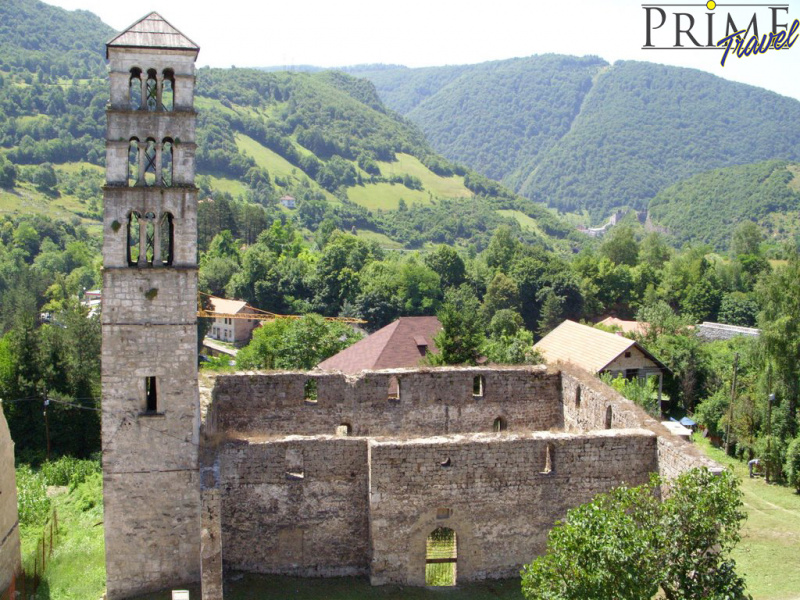
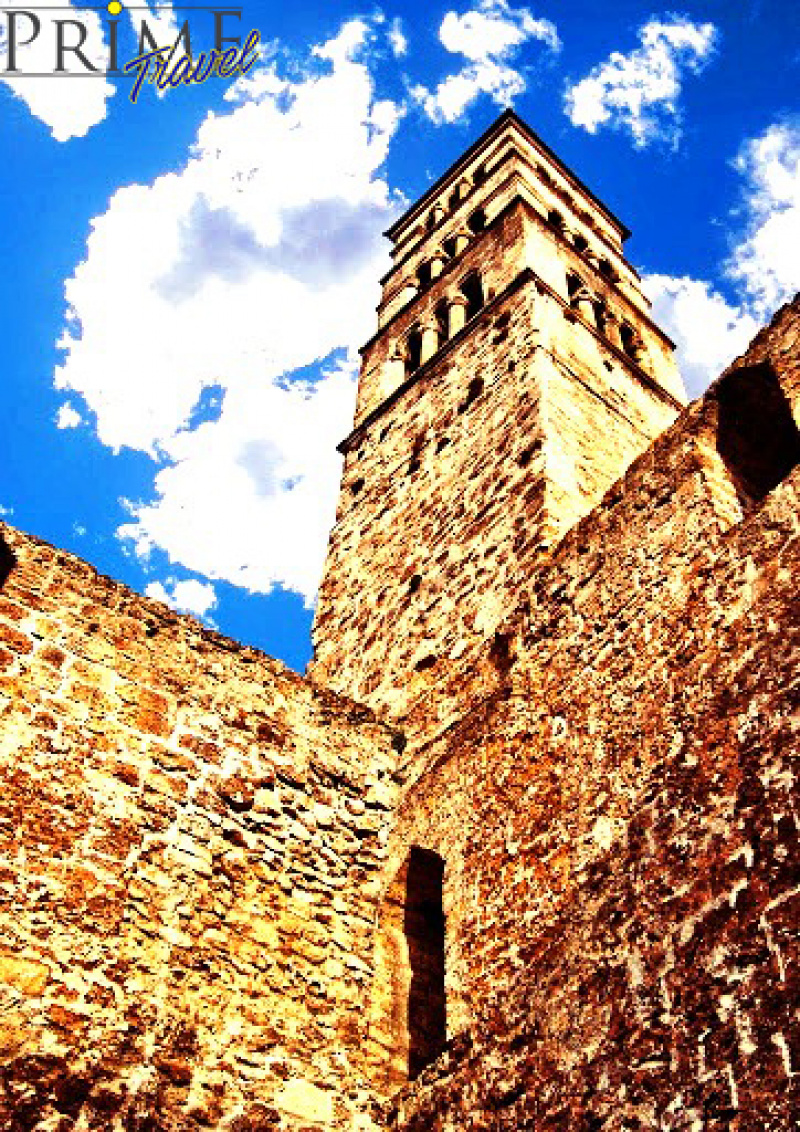
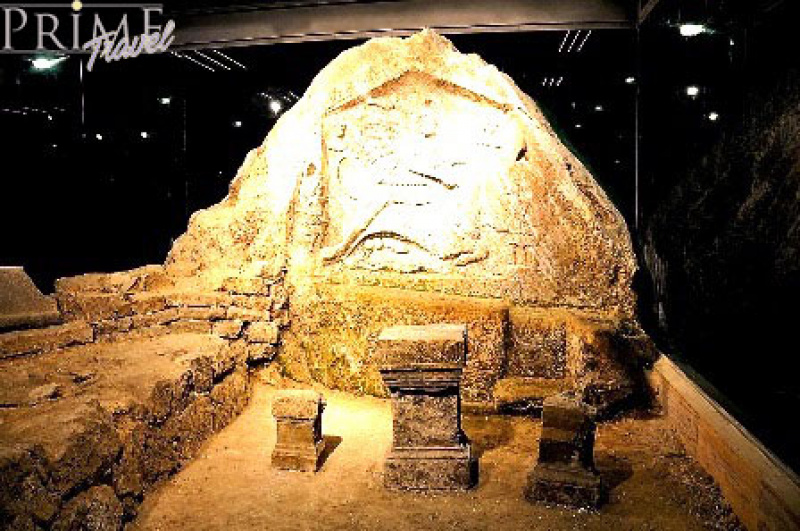
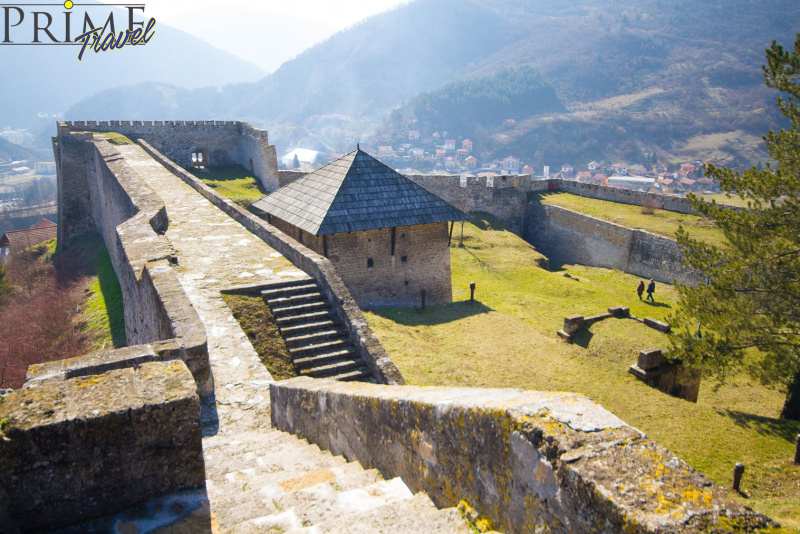
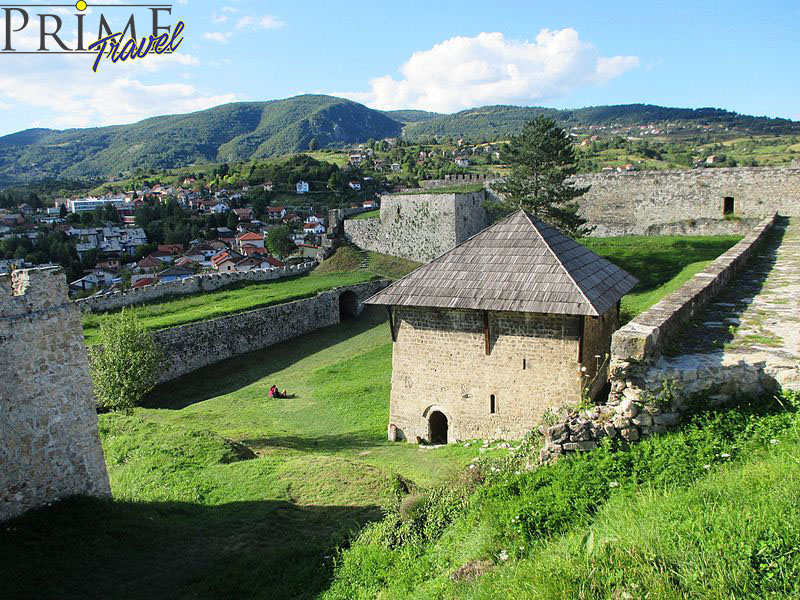
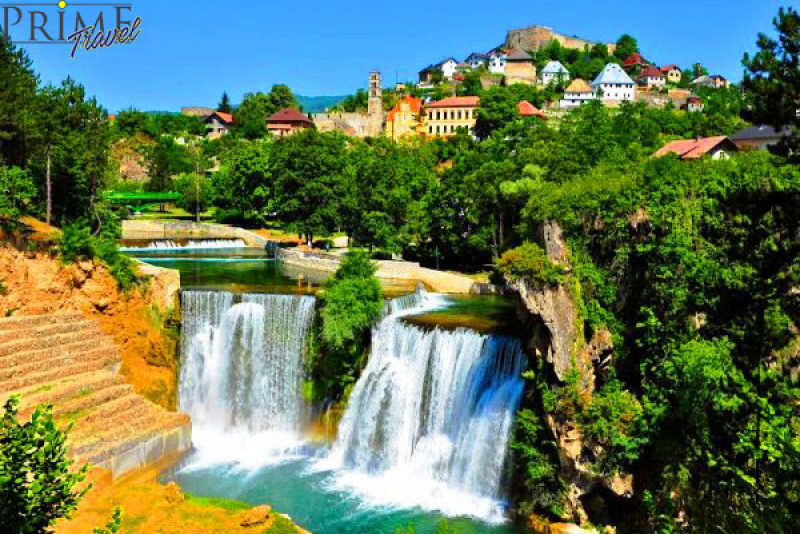
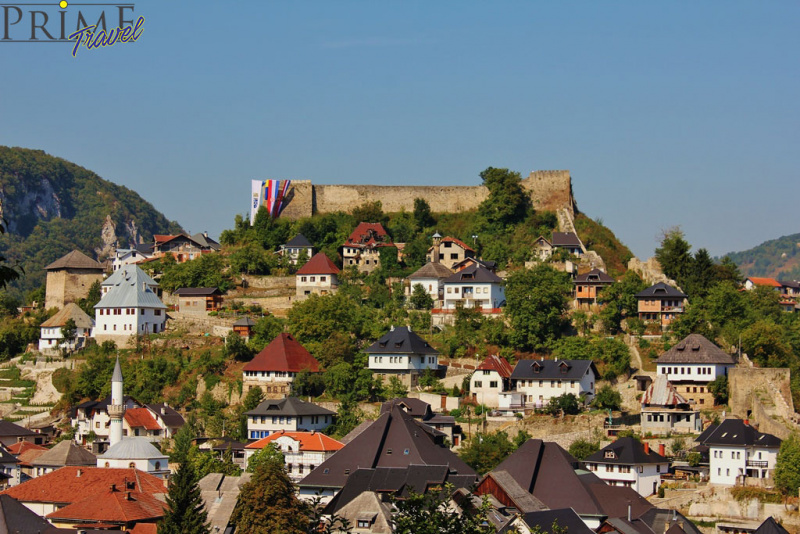
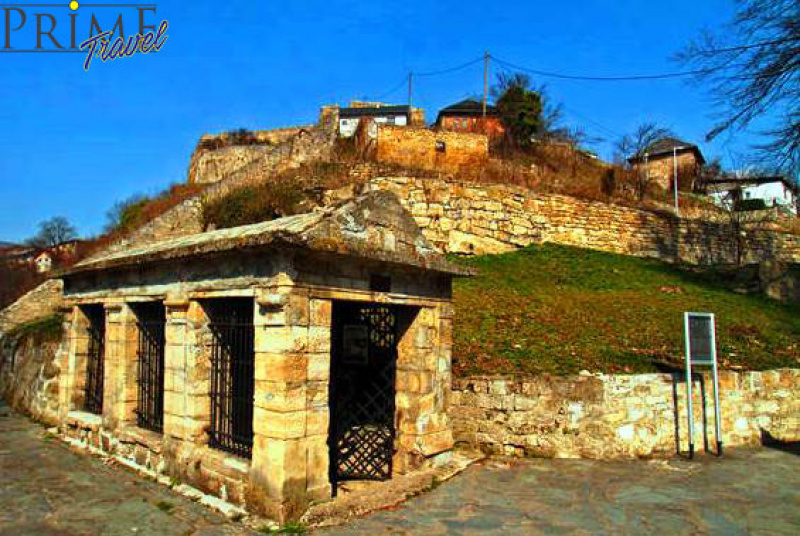
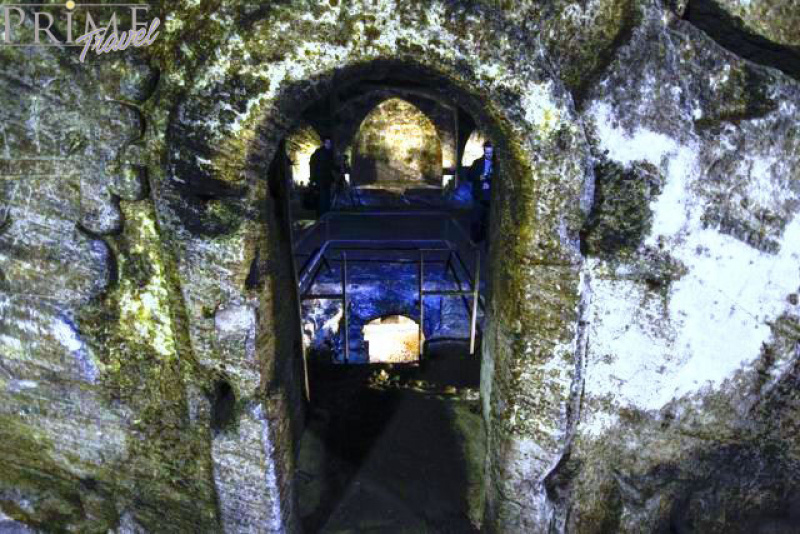
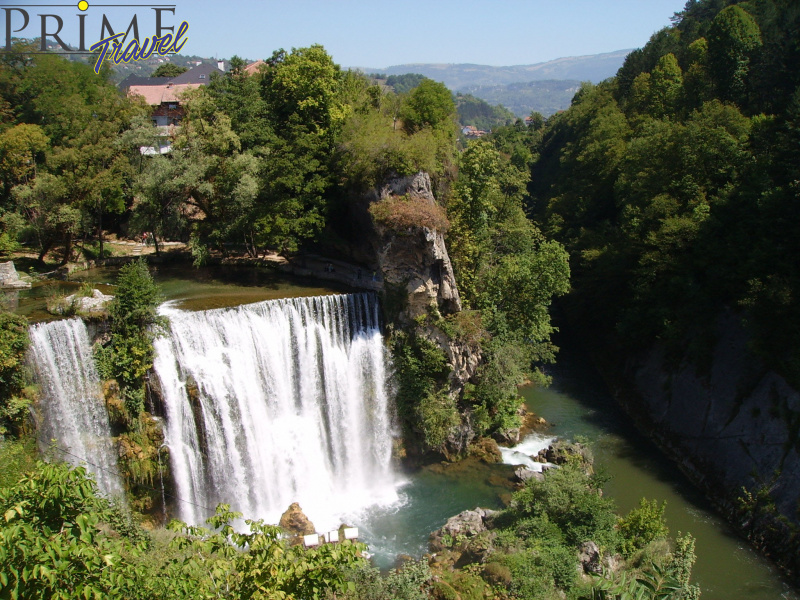
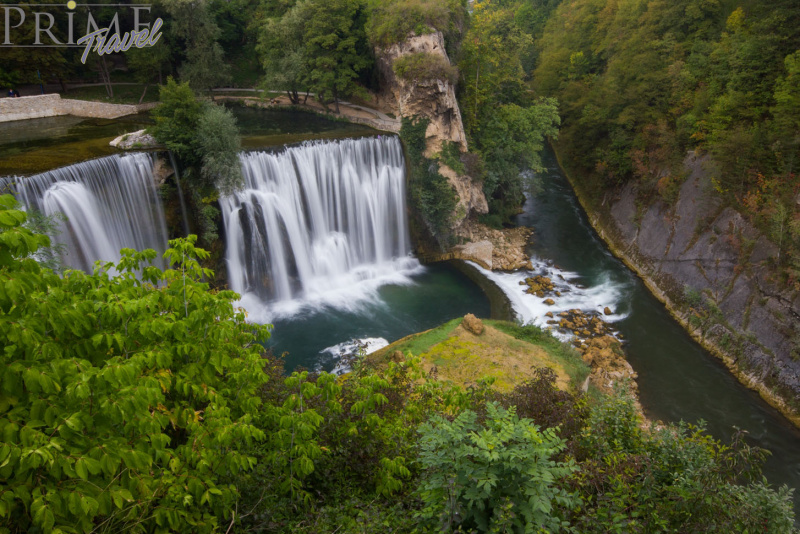
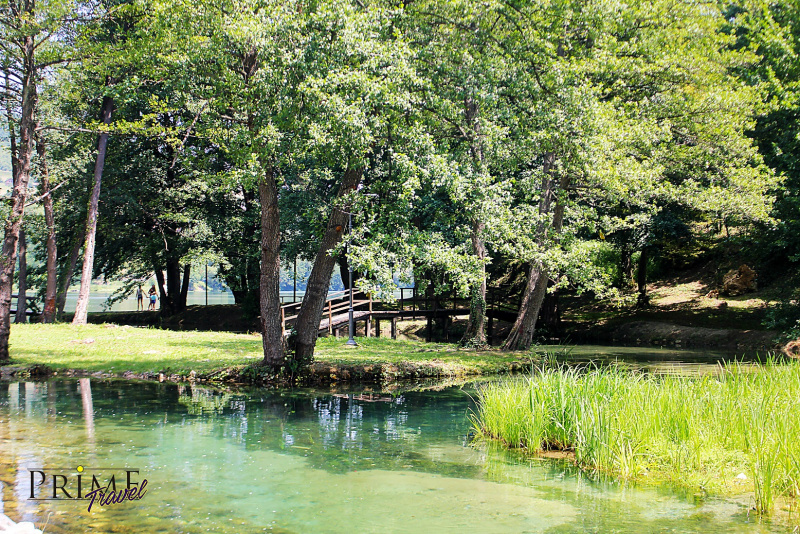
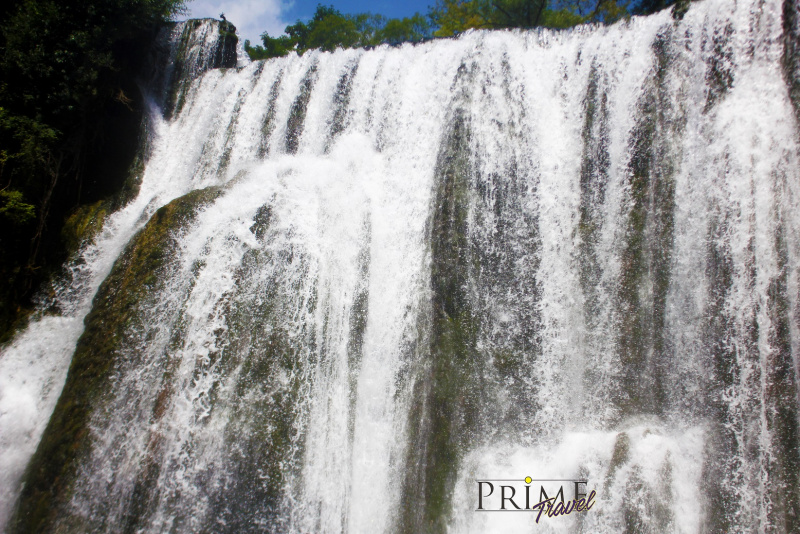
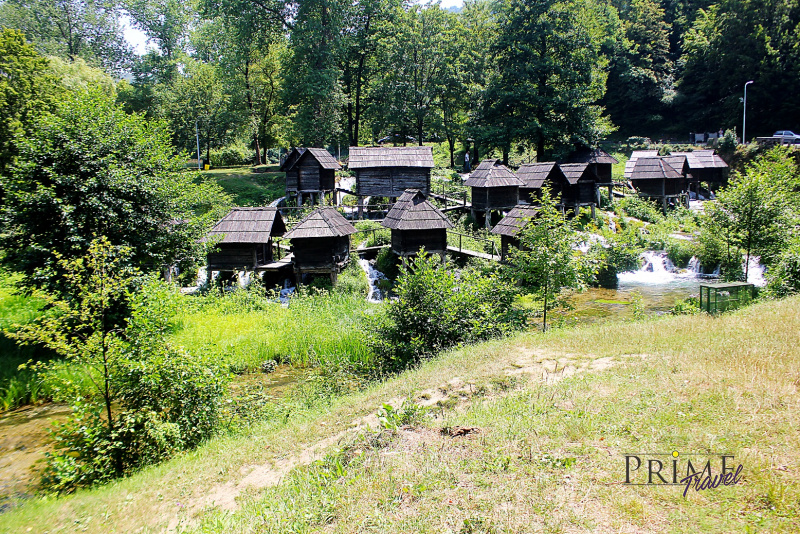
Price: Contact us
Jajce is one of the most significant places of Bosnian and Yugoslavian history. The historic urban area of Jajce was nominated to the World Heritage List of UNESCO, on 23th April 2008 they have officially fulfilled the requirements for a registration.
In the Middle Ages Jajce was first mentioned in 1396. Here is the residence of Hrvoje Vukčić Hrvatinić, and later the residence of Bosnian kings. There was executed the last Bosnian king Stjepan Tomasevic in 1463.
Sights you can visit in Jajce:
Fethija or Süleymaniye Mosque
After the waterfall the church or mosque is the most recognizable symbol of Jajce. Mitrej from the 2nd century is the only one that is older than the mosque according to the chronology of national monuments in Jajce.
Already in the 13th century on today´s building was a small Romanesque church. The church of St. Mary with the tower of St. Luke has several stages of construction. Given to the complexity of the facility, numerous redrawing and demolition which he was exposed in the course of his history, it is not possible to exactly determine the original shape of the object. It is assumed that the original building was a simple single-nave basilica with Romanesque features styles- simple preacher church with a wide boat and elongated rectangular sanctuary on whose end stood the altar pressed against the wall.
In the first half of the 15th century when Jajce was promoted to the capital of the Bosnian kingdom, the old Romanesque church was renovated in the Gothic style. According to the established historical facts, after her marriage to the Bosnian throne Stjepan Tomasevic on the 1st April 1459, the daughter of the Serbian despot Lazar, Jelena Brankovic, brought into the Church as dowry the relics of St. Luke the Evangelist, which despot Đurad Brankovic purchased from the Ottoman sultan for a sum of 30,000 ducats (which is about 70 kg of gold) in 1453. Today, these bones are in Italy in Padua.
In November 1461 in this church were conducted the coronation of the last Bosnian King Stjepan Tomasevic by the papal deputies. Stjepan Tomasevic was crowned in Jajce, in Jajce he was executed and his tomb is located there. Also, you can see the bones of the last Bosnian King exhibited in a glass case in the Franciscan monastery of St. Port.
During the Ottoman period, in 1528 the church was rebuilt in a mosque and was called Sultan Suleyman II. The mosque was several times burned, because of the heating materials and lights.
The most damage happened in a fire in 1658, in the last fire in 1832 from the building only remained the walls. Since 2003, the building is under the state protection as a national monument of Bosnia and Herzegovina.
Catacombs
Monument to the unique value and character - Catacombs (underground church, crypt) in Jajce is located within the city walls. During the late 14th and early 15th century, when the city experienced a remarkable political and cultural development, the mighty Duke Hrvoje Vukčić Hrvatinić, gave the order to carve the catacombs as a place of his last residence and last residence of ducal family Hrvatinića. Catacombs (underground church, crypt) - an underground building, carved into the living rock. On the lobby wall , on the left and right side of the entrance to the catacombs, are unfinished figures carved. On the left side is the male figure left to her is a heraldic figure carved, which probably represents the unfinished display of Hrvoje's coat of arms. West of the door is a female figure carved, her left arm contains a heraldic symbol, probably a lily.
Along the side walls, on each side, in the floor, are the tombs, with arched openings. On the left side of the church, in the bottom of the grooves is a double cross carved, left and right of him are the sun and crescent - the old symbols of the cult of death, the afterlife and eternal sleep. From the middle of the main room, through a separate opening, over four steep steps, enters the lower part of the catacombs, a kind of crypt. The whole middle of the crypt occupies the altar with perforations in the form of a double cross, the crescent moon and the sun. In the late 19th and early 20th century, the entrance to the catacombs is roofed by a ground stone porch.
Jajce Fortress
Jajce Fortress is a fortress in the Bosnian town of Jajce. The fortress is situated in the Old Town complex. It is assumed that it was built in the 13th century.
In the southwest is the entrance to the royal coat of arms. The fortress covers an area of 11,200 m2, and the length of the walls is 1300 meters.
The fortress was built by Hrvoje Vukčić Hrvatinić who is also the founder of Jajce. It was the seat of kings, whose coat of arms engraved on the castle. The walls are high and the castle was built on a hill, which is in the shape of an egg, the river Pliva and Vrbas are also the protectors of the castle. The whole area is geographically and historically interesting.
Pliva waterfall
Pliva waterfall is located in the town of Jajce in central Bosnia and Herzegovina, where the river Pliva flows into Vrbas. The high is 22 meters, but after the earthquake and the war in Bosnia and Herzegovina, it is 20 meters high.
One of the twelve most beautiful in the world, but the only one that is located in the city center. He is unique according to the origin, the Pliva river makes him while pouring into Vrbas.
Temple of God Mithras-Tauroctony, Indo Iranian deities
Mithras cult was widespread among the Romans so that it witness the ancient culture in Jajce. The Romans built it in the fourth century, he was 'discovered' in 1931. If you enter, you will notice a relief of sacrificing a bull.
The temple of the god Mithras, in the form of smaller cave in which on the bedrock is displayed a Tauroctony image (ritual sacrifice of a bull which is characteristic to the mitristich ritual), is among the most significant findings from the area of Jajce.
This Mithras in Jajce is a symbol of the deity of the sun and light - Mitra. According to the follower beliefs he gives people courage, countries ensures peace, protects the righteous, promises thrones to emperors.
Mitrej is the oldest national monument in Jajce. According to the latest research Mitrej in Jajce was built in the II. century, and in IV. century it was again rebuilt by the officials of the Roman customs station in Jajce. The cult of the invincible sun god - Mithras was spread throughout all the provinces of the Roman Empire, including that of Dalmatia, in which borders was the largest part of today's Bosnia and Herzegovina.
Members of Mithraism sought to locate their places of worship in caves, but they have built small single-celled temples - or spelaea, and if the terrain permitted, buried them in the ground. An example of the temple - spelaea carved in the rock, is located in Jajce in the eponymous street and it sets a unique and rare example. The relief is showing god Mithras wearing a Persian costume, with a fluttering cloak, with one knee leaning on the bull and holding the bulls mouth with his left hand, while he is stabbing the bulls heart with his right hand. Assisted by a dog, snake and scorpion. Relief Mitre is the only example in Bosnia and Herzegovina where among to the torchbearer also displays two free Mithraic sculptures.
Bear tower
Bear Tower is located in the western city wall in the old town of Jajce. It is not known exactly who and when it is constructed, or what his purpose was.
It was built in Romanesque style and therefore one of the oldest buildings of the Bosnian Middle Ages. There are two beliefs regarding the etymology of its name. One says that it is called a bear because of its heavy and thick walls that are up to 6 m. Other says that it is so called because bears lived there, which were fed with prisoners and convicts.
Tower St. Luke
is actually the bell tower of the Gothic church of St. Mary, though it was metonymically called the whole church. It was founded in the fifteenth century and the form of construction points to even three styles: Romanesque, Gothic and Renaissance. Date of occurrence of the church has not been determined, but is supposed that it was built on the site of an older Romanesque church at the beginning of the fifteenth century. The church was a place of storage relics of St. Luke the Evangelist, which is brought in Jajce as a dowry from the last Bosnian Queen Mara Jelena.
The church St. Mary, built in the 13th or 14th century in Romanesque style, was extended with the tower of St. Luke around 1461. This tower is the only preserved medieval monument of this kind in the Balkans.